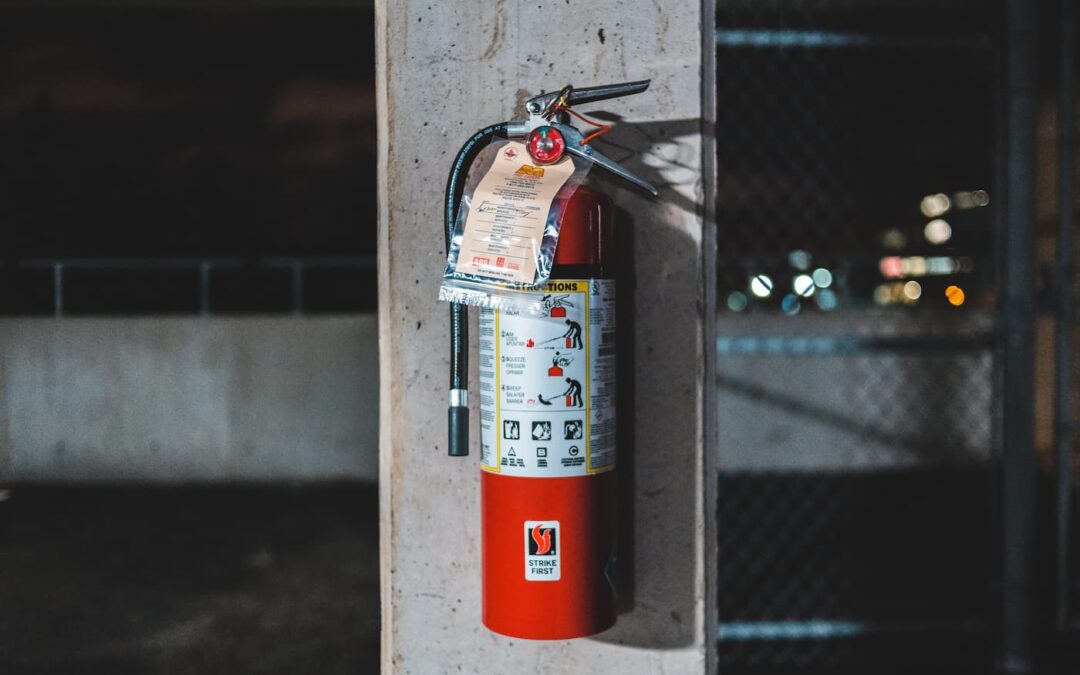As a property owner, keeping tenants safe is a high priority. Ensuring your property remains secure and free from safety hazards protects both your renters and your investment. Updating locks, securing loose handrails, obtaining insurance, and repairing damage are all crucial tasks for a DIY landlord. And of course, one of the most critical safeguards of all: fire prevention. When we think about fire safety, one of the first things that come to mind is smoke detectors. These simple yet effective devices are an essential part of any living space’s fire defense. But don’t rest on your laurels once you’ve installed the alarms required by Portland law. Next, you need to make sure that you’re following Oregon fire extinguisher code properly.
Fire extinguishers are a tenant’s first line of defense in a house fire. When used properly, they can make the difference between a ruined dinner party and a total conflagration. By making sure you’re compliant with Portland’s fire extinguisher code, you’re helping keep your tenants and your property safe. Rent Portland Homes by Darla Andrew wants to provide the tools you need to understand Portland’s rental laws. Here are a few things to keep in mind about your rental’s fire extinguishers.
Oregon Fire Extinguisher Law
Let’s start with the letter of the law. Your property must comply with the fire extinguisher code guidelines laid down by the National Fire Protection Association (NFPA) and the Oregon Fire Code. On a national scale, the NFPA mandates that all buildings other than family homes, duplexes, and manufactured homes must have a fire extinguisher.
On a local level, the ordinances get more detailed. Section 901.6 of the Oregon Fire Code code dictates that “[p]ortable fire extinguishers shall be installed in the following locations: In new and existing Group A, B, E, F, H, I, M, R-1, R-2, R-4 and S occupancies.” For those who aren’t innately familiar with building code jargon, let’s dive into the particulars:
The main categories landlords need to worry about are R-1, R-2, and R-4. Group R-1 covers sleeping units where the occupants are primarily transient, such as boarding houses, hotels, and motels. R-4 includes “buildings, structures or portions thereof for more than five but not more than 16 persons, excluding staff, who reside on a 24-hour basis in a supervised residential environment and receive custodial care.” Examples of these types of residences include assisted living or rehabilitation facilities.
For residential landlords, the most important category is R-2. These are “occupancies containing sleeping units or more than two dwelling units where the occupants are primarily permanent in nature.” In short, if you’re renting to more than one family or own a duplex, you’ll need to install at least one fire extinguisher on the premises.
Placing Your Fire Extinguishers
Once you’ve determined whether the law requires you to install a fire extinguisher, let’s dig into the particulars. There are many considerations when picking out a fire extinguisher, from the location to the type of fire your tenants might face. Oregon fire code dictates that fire extinguishers must remain in “conspicuous locations where they will be readily accessible and immediately available for use.” They must not be hidden from view or obstructed by any obstacles. If there’s nowhere you can put your fire extinguisher so it’s not blocked or in plain sight, you must clearly indicate its location by some other means. The maximum travel distance to the fire extinguisher must be less than 75 feet.
Different Fire Extinguishers for Different Properties
For residential settings, look for a fire extinguisher capable of tackling Class A fires, which include ordinary materials like paper. Class K fires involve grease, and an extinguisher effective against this type of fire may be a good choice for a kitchen area. Most residential settings fall into the category of light hazard occupancy. For these types of residences, you need a minimum of one 2-A rated extinguisher per 3,000 feet.
If you own a multifamily property, keep in mind that you will be subject to inspection by Portland Fire and Rescue under Portland City Code Title 31. PF&R inspects approximately 38,000 occupancies throughout the city to gauge emergency exits, lighting, exit signs, and of course, fire extinguishers and alarms. This makes it even more important to be sure you’re compliant with Oregon and national fire codes. In all settings, fire extinguishers should undergo a visual inspection once a month, which your tenants can conduct. They must also undergo annual maintenance by a qualified technician from a professional fire protection agency. These inspections look for signs of deterioration, tampering, leaks, broken seals, host blockages, or other issues.
Get Help Navigating Fire Code Requirements
In the right circumstances, fire extinguishers can make the difference between life and death. Each year house fires cause 12,300 injuries and 2,500 deaths, in addition to $7 billion in property damage. Fires are costly, dangerous, and often tragic. Providing your tenants with the tools they need to prevent and contain them is critical. Some surveys have suggested that fire extinguishers can stop a small fire in 95 percent of cases.
With so much at stake, local and national fire codes tend to be complicated and stringent. At times it can be difficult and stressful to know where you and your property stand regarding the law. If you’re tired of trawling through long and complicated documents in search of answers, teaming up with a property management company may be the right path for you. Contact Rent Portland Homes by Darla Andrew at (503) 515-3170 to learn how we can help.


Recent Comments